Top 10 Least-Visited Places in China Makes You Surprised
 Top 10 Most Haunted & Ghost Places In China Top 10 Most Haunted & Ghost Places In China |
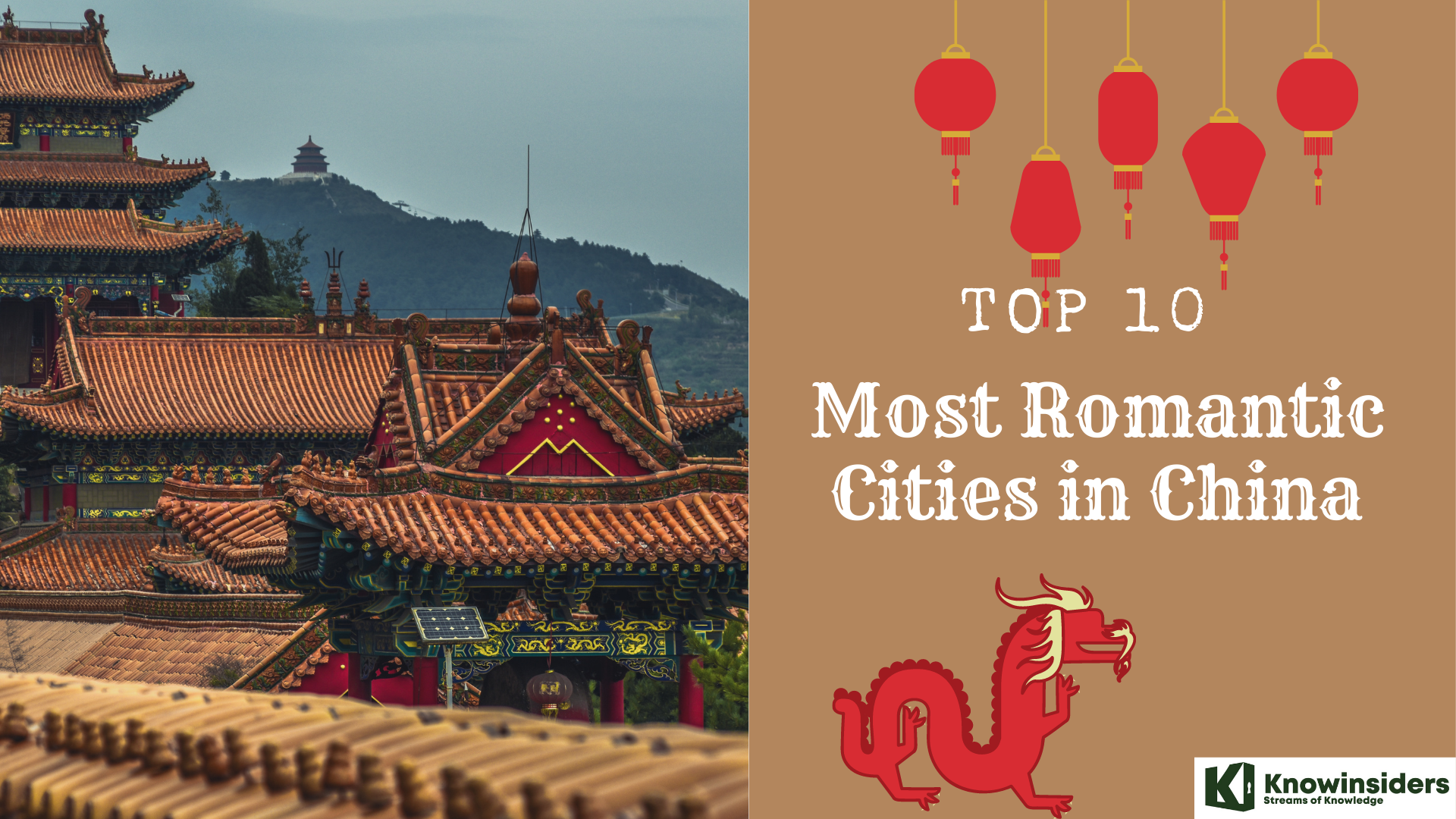 Top 10 Most Romantic Cities in China Top 10 Most Romantic Cities in China |
 |
| Top 10 Least Popular Places in China |
| Contents |
There must be some ghosts lurking in the shadows of China, what with the country having a history stretching back over five thousand years. China is ripe with opportunities for spooky encounters, from Beijing's eunuchs to Shanghai's abandoned mansions. Brace yourself for the unsettling reality of China's supernatural folklore and legends.
China is packed with amazing experiences. It's possible to check off several items on your travel bucket list by visiting China, including the Great Wall, the Bund in Shanghai, the Temple of Heaven in Beijing, and the rice paddies in the South. But what about going to a less-visited part of China? Here you can live like a local in China, something that not many tourists get to do. They're easier to get to than you might imagine. Listed below are some of the best annual tourist-free destinations.
Tips to Visit China
Avoid falling for China's fake "ancient" towns.
Amazing old towns and villages, real places where traditional ways of life and architecture are still practiced, are all over China. A large number of false "ancient towns" that are unattractive recreations of historical settlements can also be found there.
This strange occurrence just started happening. In its haste to modernize, China has bulldozed many of its oldest neighborhoods to make way for new construction. It has constructed countless fake ancient towns in an effort to fill this gap, allowing mostly local visitors to see what Chinese communities once looked like. They are undoubtedly charming with their quaint teahouses, arched bridges, stone streets, and graceful buildings with elaborate multi-tiered roofs. However, the attractive façade conceals nothing, much like a movie set.
The authentic old towns in China are farther out, while these touristy locations are typically found on the outskirts of the cities. Research these places before you go because the latter are well worth the effort while the former are a waste of time. In this story for World Nomads, I listed five of my favorite actual ancient Chinese towns.
The rail network in China is amazing.
Since it invented this cutting-edge mode of transportation in the 1960s, Japan is known throughout the world for its bullet trains. China's rail system was shaky and constrained at the time. China, however, has not only caught up to Japan over the last 15 years—it has surpassed it.
Amazingly, China currently has nearly 23,000mi (37,000km) of high-speed rail, more than any other nation in the world combined, and the system is continually growing. Every major city in China has high-speed stations, and these trains are effective, cutting-edge, cozy, and incredibly affordable. For instance, the 290-kilometer (180-mile) trip from Shanghai to the ancient city of Nanjing only takes 60 minutes and costs US $24. A similar trip on a bullet train in Japan or Europe could easily cost you $70 or more.
Be sure to visit China's incredible national parks.
Skyscrapers, enormous temples, and bustling markets all come to mind when thinking of China. Due to this, a lot of tourists view China as an urban destination and pack the city experiences into their travel plans. That is a terrible mistake. I recently traveled deep into the Swiss Alps, which are renowned for their breathtaking alpine scenery, but I found that they were no more impressive than many mountainous regions I've seen in China.
The days I spent hiking and gawking in awe at the breathtaking Jiuzhaigou National Park still come to mind when I daydream. One of a number of untamed national parks on the Tibetan Plateau, this wonder is located in the Sichuan Province of central China.
The spiky karst mountains and meandering rivers of Guilin Lijiang National Park captivated me just as much. Not to mention Hangzhou's serene West Lake National Park, which surrounds the body of water with willow trees, stone bridges, classical gardens, and historic buildings. Despite how big and fascinating China's cities are, avoid letting them take up most of your travel plans.
Expecting locals to speak English is unrealistic.
You won't often have trouble finding someone who speaks at least a little English in many of Asia's most popular tourist destinations, including Japan, India, Singapore, Thailand, Malaysia, and Vietnam. Not so in China, especially outside of its two most popular tourist destinations, Shanghai and Beijing.
It's extremely uncommon to find anyone who speaks English (or is willing to speak English) outside of high-end hotels in Chinese cities. Most frequently encountered by foreign tourists in China are taxi drivers, store employees, and restaurant staff, all of whom are highly unlikely to be able to carry on a conversation.
Now, please don't take this the wrong way; I have no knowledge of Mandarin or Cantonese. But if you don't prepare for China's language barrier by downloading translation apps or going old school and using a printed guidebook with Chinese language translations, you'll experience significant inconveniences.
Top 10 Least Popular Places in China for Discovery
(Ranked by KnowInsiders)
1. Leye Tiankengs
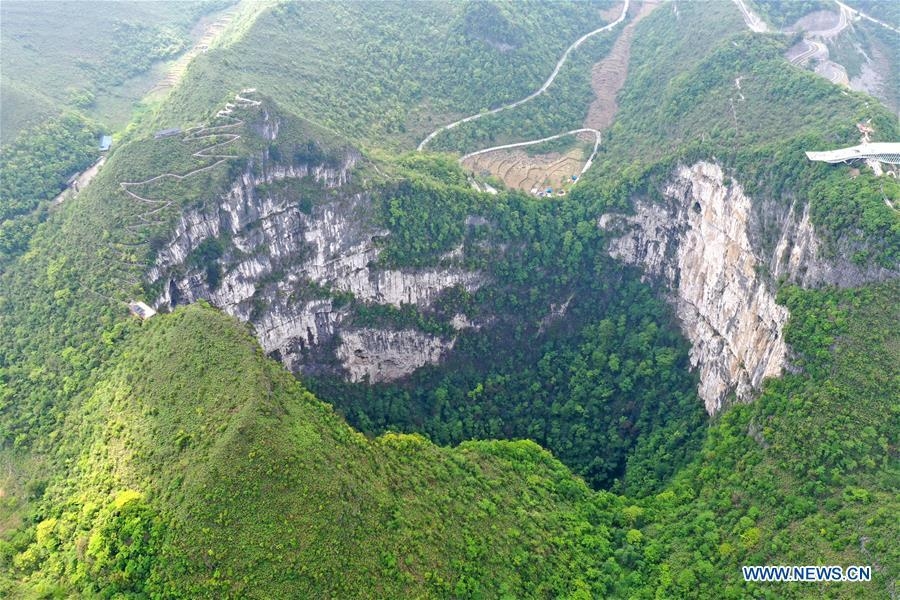 |
| Photo: ecns |
Leye appears to be destroyed by a meteor swarm, according to a bird's-eye view of the planet. A Karst Topography with a density of 28 Tiankengs is restricted to a 20 km2 area, which is unusual for the world. The 7 Tiankengs in Leye outnumber the total number of Tiankengs in the entire world, which is 13. The second-deepest Tiankeng in the world and the one with the third-highest volume is the magnificent Dashiwei Tiankeng.
The Taipei 101 won't outcrop in the Dashiwei Tiankeng, so let's use that as a concrete example to illustrate how deep it is! The UNSECO designated Leye Tiankeng as "the world-class geopark" in 2010. Take the sightseeing cable car today to see the incredible Karst landscapes!
2. Qui Mansion
Two Qiu brothers who were migrant workers in Shanghai built this mansion. In the past, they built two identical mansions and sold paint. The mansion's magnificent architecture and decorations were well-liked throughout the community. The two brothers were avid collectors of dangerous animals and kept crocodiles and the Burmese tiger in their man-made lake.
After the Qui brothers mysteriously vanished one day, the neighbors began caring for animals. Some of those animals were later consumed, and they neglected the garden. It quickly became a maze of skeletal branches.
There are rumors that the mansion is home to strange species' shadows and ferocious animal voices. Some people think that because the Qui brothers cared so deeply about the animals, when their neighbors mistreated them, their ghosts began to haunt people. The Four Season Hotel is located close to Qui Mansion, and hotel duty guards have frequently reported unexplained activity there. In addition, several guards were treated for mysterious-looking animal bites at the hospital and none of the guards know how the injuries happened.
3. Qaidam Ghost City
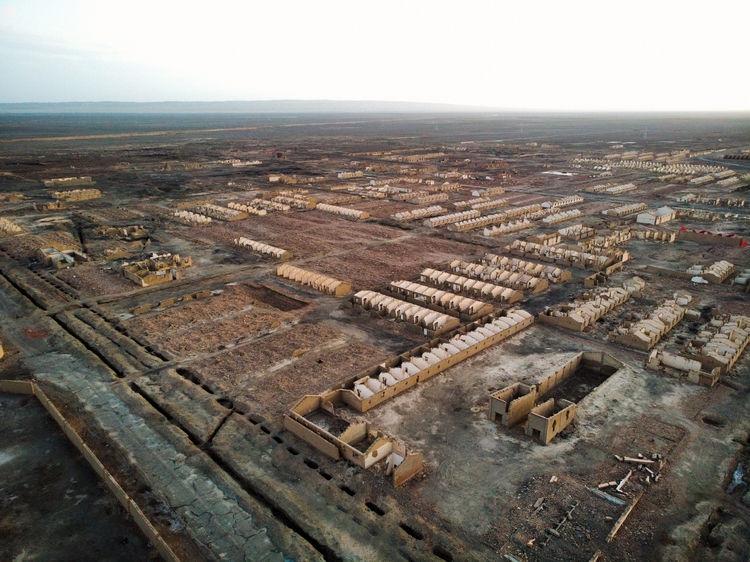 |
| Photo: inf |
Qaidam Ghost City is the largest Yadan landform in China, and probably the most beautiful one. A maze-like soil forest is rising in the deepest of the wild desert, the unusual landscape formed under the erosion by wind and rain shocks the visitors with the landforms as the same bleak as the surface of the moon.
The dead silence reigns everywhere when winds stop, you can even hear your heartbeat echoing in the weird mounds as if you are the only human here. The wind howls to carry the sands of the Ghost City when the red setting sun in dusk curtains a half of the sky, a strange feeling mixed of dread and exclamation to beautiful sights rises from the heart bottom of each visitor.
 Top 10 Most Haunted & Ghost Places In China Top 10 Most Haunted & Ghost Places In China |
4. Zhangjiajie
If you know anything about Zhangjiajie, you know that the 2009 movie Avatar made it well-known. The forest, which is in Hunan Province, served as the model for the Hallelujah Mountains in the popular movie and is China's first national forest park. It also played a significant role in the making of the movie. Pictures clearly show how bizarre this forest is.
It is largely made up of "floating peaks," which are quartzite-sandstone formations that give the impression of floating in a sea of clouds. There is also a variety of flora and fauna, forests and streams, and even endangered species to be found, including the Chinese giant salamander and Chinese water deer, to name a couple. They are the definition of spectacular and are found nowhere else in the world.
5. Zhada Earth Forest
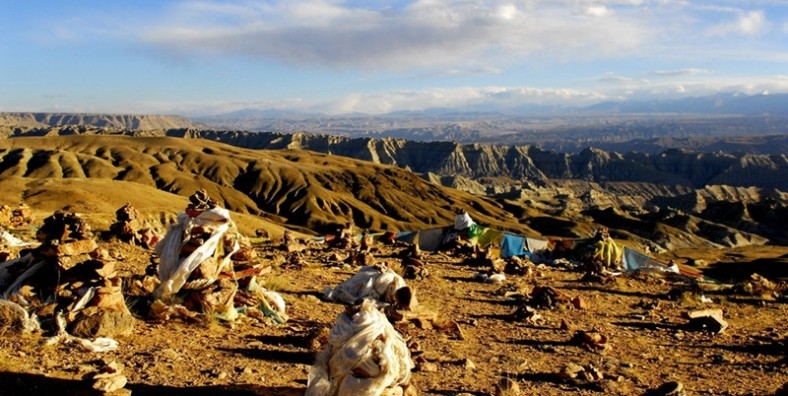 |
| Photo: mysterioustibet |
At Zhada Earth Forest, where earth pillars and pagodas stand on the yellow plateau, the scene is very different. A question enters the mind as the eyes close from the glaring sunlight: what actually happened there? The ever-changing rivers and lakes, along with water and wind erosion, transformed the Zhada Basin into the expansive earth forest landscapes we see today.
Even the enigmatic Guge Kingdom had existed in that distant time among the untamed earth forest. The ideal vantage point to take in the stunning views of Zhada Earth Forest is from the official viewing platform. Remember, if you want to get some good pictures, don't miss the sunset or sunrise hours!
6. Badain Jaran desert
The third-largest desert in China, this remote region spans the provinces of Inner Mongolia, Gansu, and Ningxia. Its captivating sand dunes, which are some of the tallest in the world, are what make it so unique.
The typical dune is 200 meters tall, but some giants can reach 500 meters. Many vibrant lakes can be found scattered throughout the desert, where you can go swimming while camels and other animals enjoy a well-earned drink. One of the few locations in the world where the phenomenon of "singing dunes" takes place is Badain Jaran.
7. Fengdu Ghost City, Chongqing
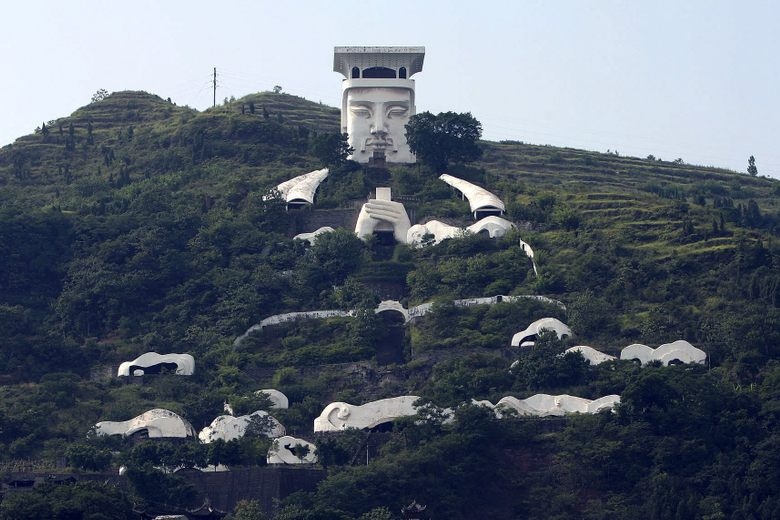 |
| Photo: atlasobscura |
The eerie past of Fengdu Ghost City, which is located on the Yangtze River's banks, spans more than 2,000 years. Two Eastern Han Dynasty imperial officials allegedly used Taoist techniques to achieve immortality in the nearby Ming Mountain. They dragged all nearby villages into the underworld because the combination of their names meant "King of Hell."
Temples and shrines dedicated to the afterlife surround the area today. Paintings and sculptures that depict scenes of villagers being tortured for their sins line the temple walls, taking visitors on a tour of the dark side of traditional Chinese culture. So maybe not the best setting for a first date.
8. Sangke Grasslands
Sangke Grasslands, a place where you can unwind and simply enjoy the beauty of Tibetan Plateau's nature, are located just outside of Xiahe town.
Some of these magnificent pastures close to Xiahe town have been degraded by sizable circus tent tourist attractions, but you can easily avoid them and leave them behind so you can just get lost in nature. The best ways to see Sangke are on a horse or a bicycle.
9. Emei Shan
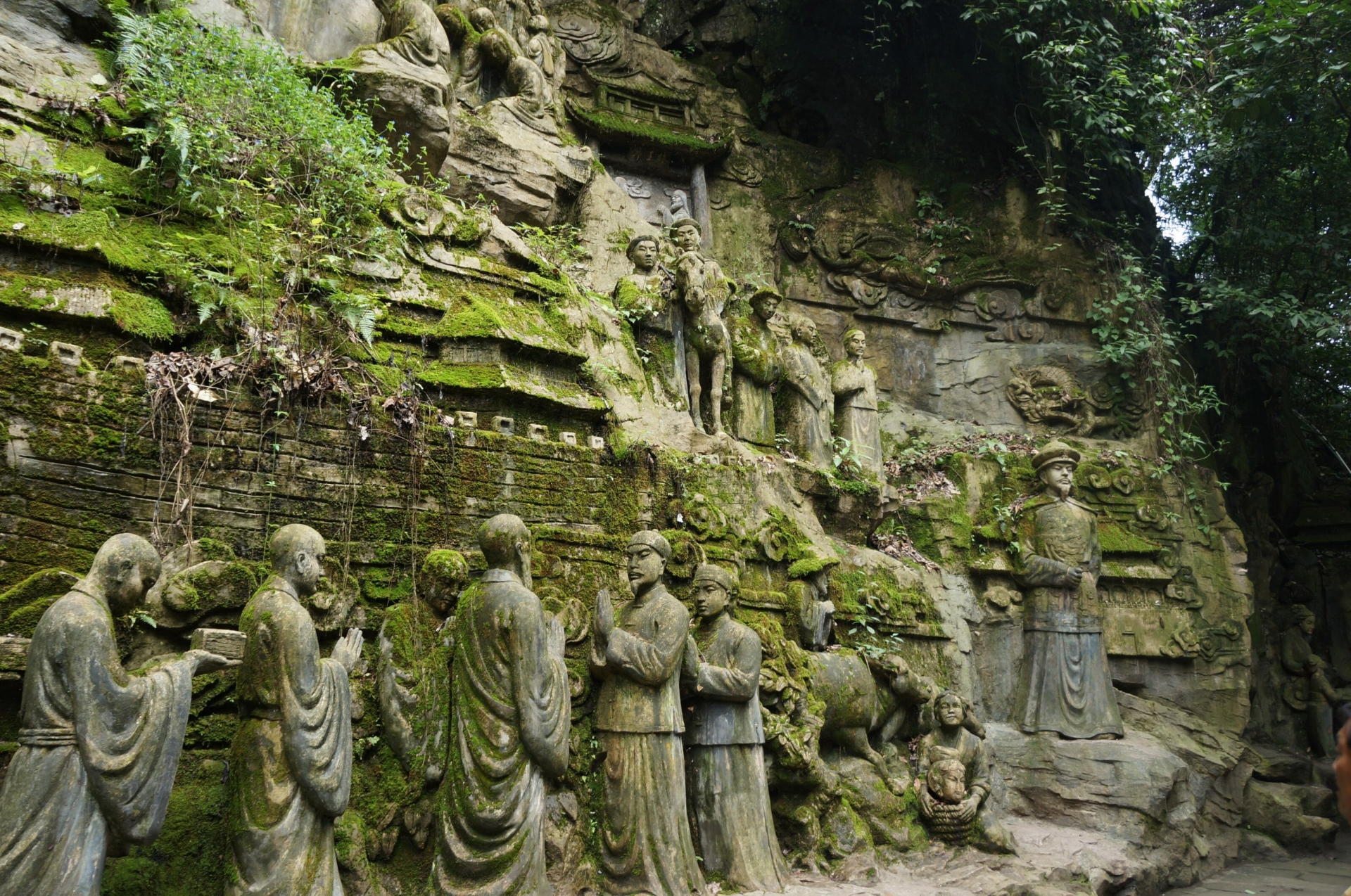 |
| Photo: novo-monde |
Emei Shan is one of China's Four Sacred Buddhist Mountains, but despite this, tourists frequently skip it in favor of Shanghai's big city attractions before moving on to Beijing's Great Wall, Xi'an's Terracotta Army, and Beijing's Great Wall. This is even better for you because it's one of China's holiest locations and the scenery is absolutely breathtaking.
The region is both a center of pilgrimage and the starting point for numerous hikes. It is home to hundreds of temples and monasteries that commemorate Buddhism's long-ago entry into China. Many of these lead to The Golden Summit, whose views above the clouds make the arduous, monkey-filled journey absolutely worthwhile. Even more awesome, Intrepid's trip there gives you the chance to have the uncommon experience of staying in a real monastery.
10. Zhangye Danxia Landform
Among all of China's unusual landscapes, Danxia is likely the most photographed because it enchants travelers with its vibrantly colored hills that are tucked away in arid mountains. When viewed from a distance, the textures and venations of the mountains appear to be compressed into distinct layers, with the gray layer resting on the yellow layer, the red layer on top of the yellow layer, and so on, resembling the brightly colored layers of waves. While Binggou Danxia is famous for the bizarre shapes that the red rocks have taken after being eroded by wind for millions of years, including the appearance of enormous mushrooms, pillars, window lattice, and more, shocking visitors by giving them the impression that they are at Roman Palace relics, the Rainbow Mountain scenic area impresses visitors with views reminiscent of oil paintings that are thick and heavy in color.
Although Zhangye National Geopark was not built with Instagram in mind—the location is far too old for that—it almost seems as though it were. The technicolor mountains in northern China are truly breathtaking, and they were created by layers of sandstone of various colors being compressed together and sculpted by wind and rain over millions of years. Imagine it as a layer cake on a grander scale.
Additionally, since the area was designated a UNESCO World Heritage site in 2010, it has gotten a little bit simpler to visit thanks to the construction of boardwalks and roads to aid travelers. Even though it's still difficult to reach, the insane site is well worth the effort.
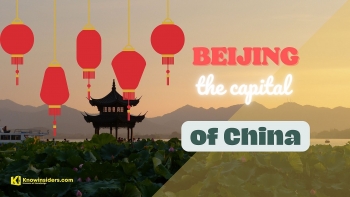 What Is the Capital of China: History, Facts and Best Places to See What Is the Capital of China: History, Facts and Best Places to See Beijing is the capital city of China and is known for its rich history and modern architecture. We rounded up all things you need to ... |
 Top 10 Most Romantic Cities in China Top 10 Most Romantic Cities in China China is a famous destination in Asia, and here is 10 most romantic cities in China for you to choose from and spend your time ... |
 Top 10 Most Haunted & Ghost Places In China Top 10 Most Haunted & Ghost Places In China China has many beautiful destinations, and also a lot of places that are nortorious for being haunted by ghosts with creepy stories. Take a look ... |























